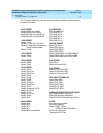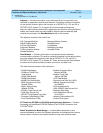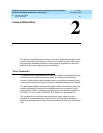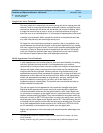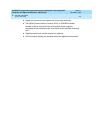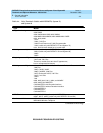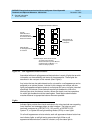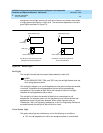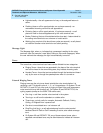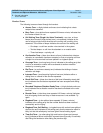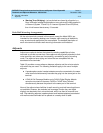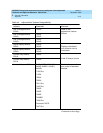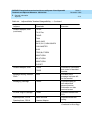
DEFINITYEnterpriseCommunicationsServerandSystem75andSystem85
Terminals and Adjuncts Reference
555-015-201
Issue 11
December 1999
General Information
2-7Voice Terminals
2
■ Speaker Button—turns on either a listen-only speaker or a 2-way
speakerphone which allows the user to speak and listen to the far-end
party.
NOTE:
On some voice terminals, this button also allows the user to initiate
an acoustic test of the surrounding environment (the Reset
Speakerphone feature) through a series of tones. When the tones
stop, the speakerphone has finished adjusting itself for optimal
performance.
■ Mute Button—turns off the microphone of the built-in speakerphone or the
handset so the other person on the call cannot hear you.
Administrable Buttons
Buttons that are not fixed feature buttons are administered (or assigned) by the
System Manager or the terminal user for many functions. Buttons that may be
administered include call appearance/feature buttons and feature-only buttons.
Every multi-appearance voice terminal has a minimum of three buttons while
others have as many as 34 buttons that can be administered as call appearances,
that is, positions for answering incoming calls and originating outgoing calls (see
Figure 2-1). In DEFINITY G1, G3, and System 75, software defaults the first three
of these buttons for appearances of the terminal’s primary (or home) extension
number; the System Manager has the option of administering Button #3
differently. In DEFINITY G2 and System 85, no buttons are defaulted for the
primary extension number; the System Manager
must
administer all the required
positions. Buttons not used for the primary extension number can be assigned as
appearances of other extensions or for activating optional features.



